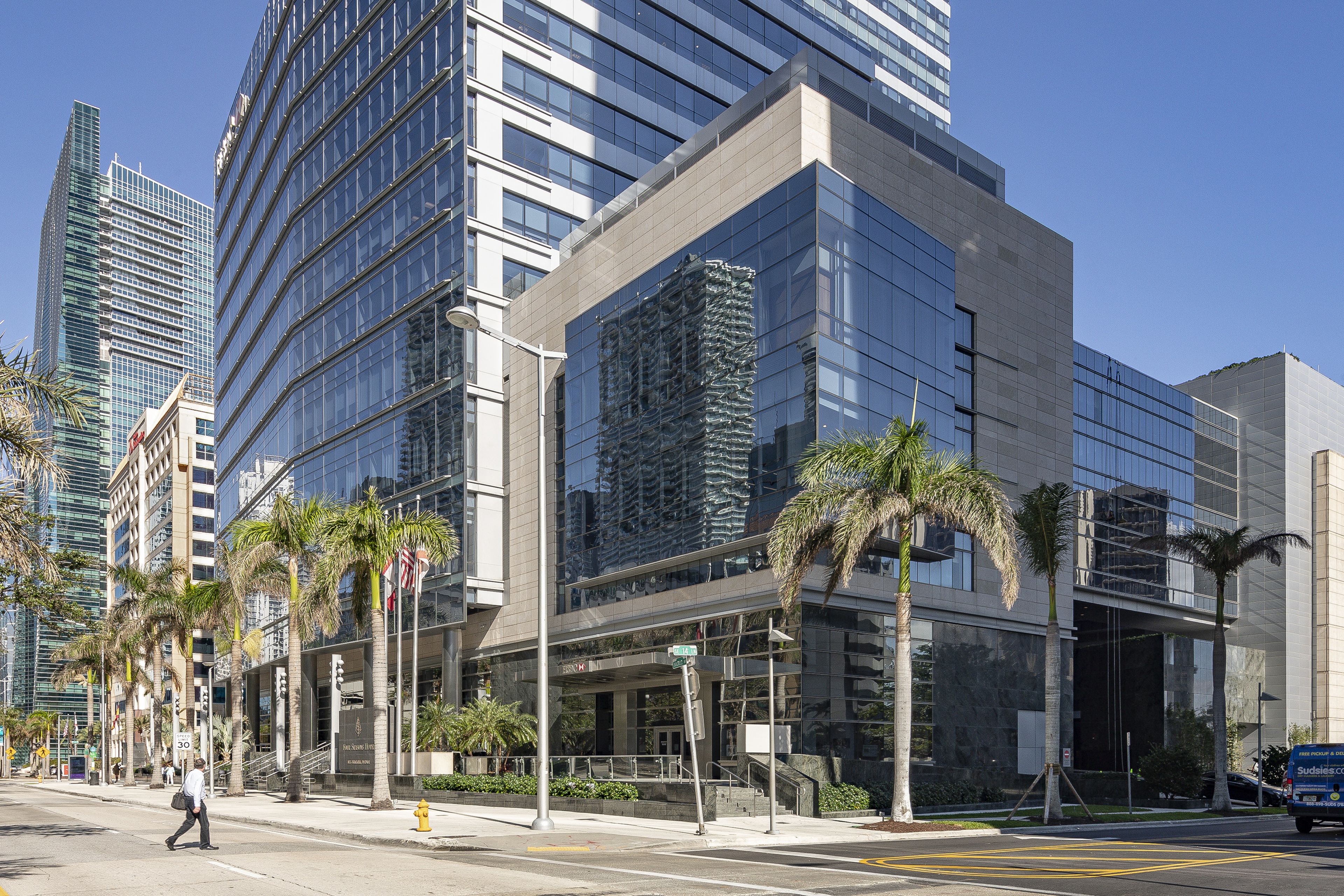)
Four Seasons Hotel & Tower Miami

Miami’s first mixed-use residential and hotel tower—and Four Seasons Hotels and Resorts’ first property in the city—was designed to cohesively bring together multiple program elements into a single tower form. Its height, at 789 feet (238 meters), exceeded that of any building south of New York City to date.
Situated just one block from Biscayne Bay, the Four Seasons Hotel & Tower Miami integrates 221 hotel rooms with 84 condo units,186 condominiums, timeshare units, seven floors of office space, three lobbies, and an array of amenities. The tower’s 500,000 SF podium accommodates a six-level, 934-car parking garage.
| Client | Millennium Partners |
|---|---|
| Architects: | Handel Architects and Bermello, Ajamil & Partners |
| Size | 70 Stories | 789 Feet (238 M) tall | 2,000,000 SF (185,806 SM) | 491 Units |
| Offices: | Miami and New York |
| Completion: | 2003 |

To ensure the tower could withstand South Florida’s high tropical winds with minimal sway with optimized stability, our structural engineering team specified an extensive wind tunnel study, an advanced foundation load test, sophisticated computer lateral analysis, creep and shrinkage analysis, and a settlement analysis.
Armed with the resulting data, the DeSimone team designed a reinforced concrete structure comprised of core shear walls, post-tensioned slabs, and perimeter columns—with spans between columns reaching 40 feet—and a substantial building core. In keeping with resilient, flood-resistant design requirements, we located all utilities and parking above the flood plain.





